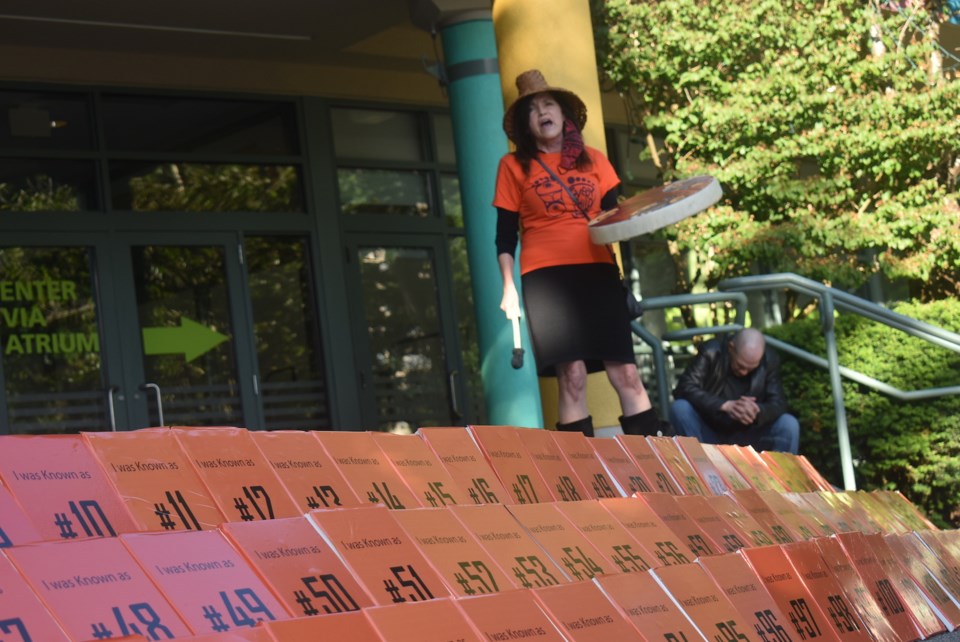“When they buried the children, what they didn’t know, they were lovingly embraced by the land…”
So began a poem, written by Abigail Echo-Hawk and read by eight-year-old Jakota Bourque, who is Metis, to a somber crowd gathered in front of Brighouse library for the second time in a week.
Richmond residents had returned to the spot where a memorial of shoes, toys and flowers was mounting to mourn the discovery of unmarked graves of 215 children found at the Kamloops Indian Residential School.
Last Monday afternoon, Steveston resident Karina Reid organized the first vigil and within hours, about 100 people gathered at the library plaza, bringing children’s shoes to represent the 215 children found in unmarked graves in Kamloops.
By this Tuesday evening, there were 215 pairs of shoes along with messages written in chalk on the ground.
There were also 215 orange placards placed on library stairs to represent the children who are thought to have died while at the residential school.
Richmond resident Mary Point, who is Musqueam, performed a paddle song from her great-uncle Dominic Point.
10-year-old Kiana McKay of the Nisga’a Nation also read a reflection piece about what she thought when she heard about the 215 children.
“I started thinking about my grandmother and how she was a survivor of a residential school. I thought about what if she was one of the children that never made it home. If she never made it home, I would not exist and my mom would not be here… Every time I think about residential schools I think about myself and all of my cousins and friends in New Aiyansh and how we may have ended up in residential school.” (Excerpt from Kiana McKay's reflection.)
Ben Stewart of the Nisga’a Nation also told the large crowd about his experiences as a child living at a residential school.
Holding the ceremony at the library plaza was meant to “send the children on their journey,” Point said.
Normally one ceremony for one person would be held within their traditional grounds, but because these children came from all over B.C., she felt it was appropriate to have more than one ceremony.
Point also thought the community as a whole needed come together to commemorate these children.
“They all feel like they have to do something because it’s too unbelievable, it’s too much to bear,” she said.
The shoes, toys and flowers were placed at the memorial spot for the 215 children found at the residential school and thus have a cultural meaning attached to them, explained Point.
But they can’t stay there indefinitely and, as a gift to the children, can’t be used for any other purpose unless they are cleansed for some other use, for example, a museum exhibit, she added.


